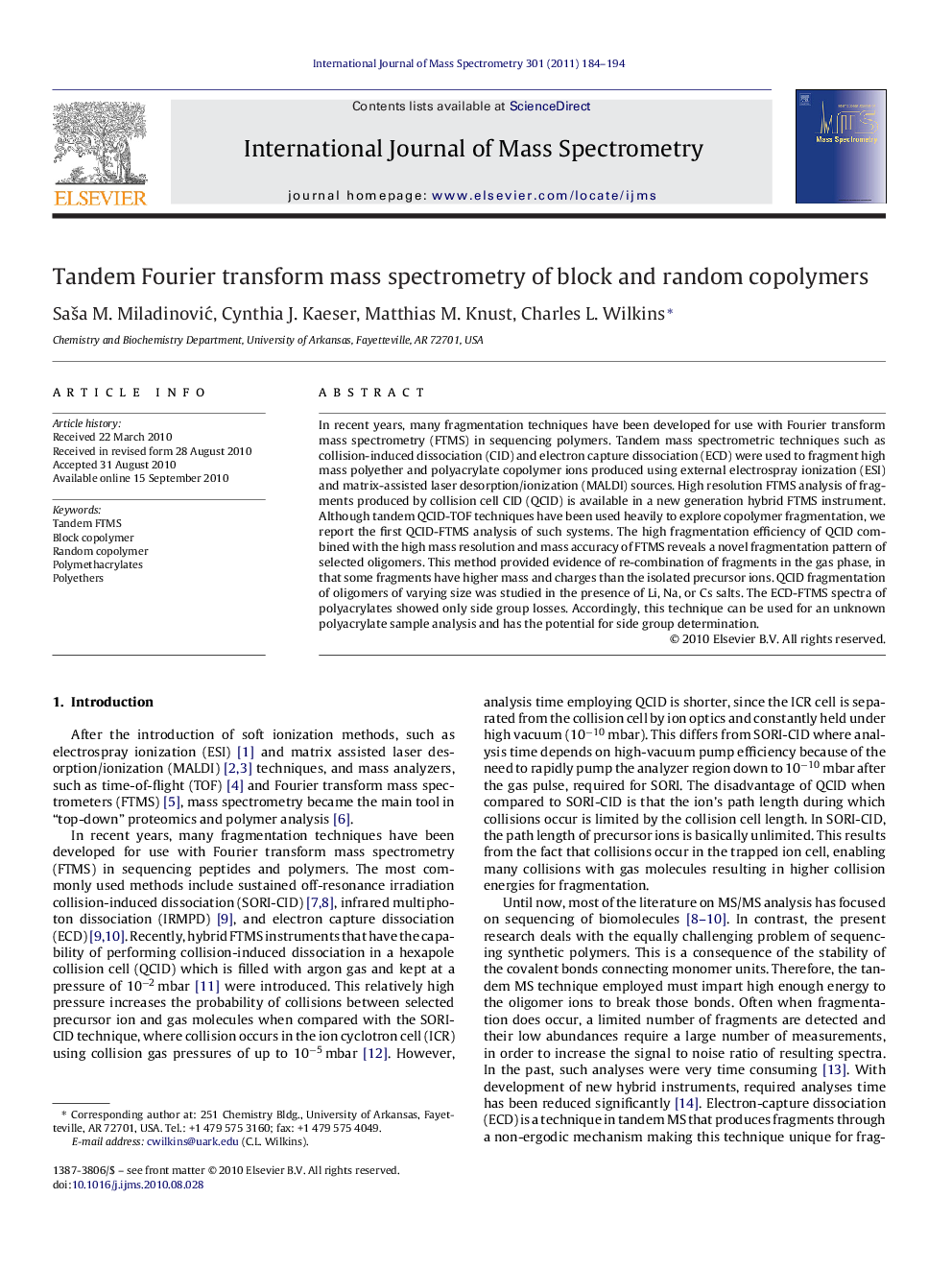| Article ID | Journal | Published Year | Pages | File Type |
|---|---|---|---|---|
| 1194485 | International Journal of Mass Spectrometry | 2011 | 11 Pages |
In recent years, many fragmentation techniques have been developed for use with Fourier transform mass spectrometry (FTMS) in sequencing polymers. Tandem mass spectrometric techniques such as collision-induced dissociation (CID) and electron capture dissociation (ECD) were used to fragment high mass polyether and polyacrylate copolymer ions produced using external electrospray ionization (ESI) and matrix-assisted laser desorption/ionization (MALDI) sources. High resolution FTMS analysis of fragments produced by collision cell CID (QCID) is available in a new generation hybrid FTMS instrument. Although tandem QCID-TOF techniques have been used heavily to explore copolymer fragmentation, we report the first QCID-FTMS analysis of such systems. The high fragmentation efficiency of QCID combined with the high mass resolution and mass accuracy of FTMS reveals a novel fragmentation pattern of selected oligomers. This method provided evidence of re-combination of fragments in the gas phase, in that some fragments have higher mass and charges than the isolated precursor ions. QCID fragmentation of oligomers of varying size was studied in the presence of Li, Na, or Cs salts. The ECD-FTMS spectra of polyacrylates showed only side group losses. Accordingly, this technique can be used for an unknown polyacrylate sample analysis and has the potential for side group determination.
Graphical abstractFigure optionsDownload full-size imageDownload high-quality image (135 K)Download as PowerPoint slideResearch highlights▶ Random and block copolymers can be differentiated by QCID-FTMS. ▶ QCID-FTMS and ECD-FTMS result in different fragmentation patterns. ▶ ECD allows determination of side group losses for polymers.
